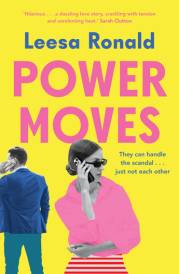Stroke patients ignore symptoms & delay treatment
Stroke patients ignore symptoms, delay treatment
Research has found 70 per cent of stroke patients and 46 per cent of bystanders did not recognise stroke at the onset of symptoms, and 85 per cent did not call an ambulance immediately, risking death or severe disability from stroke.
"Early assessment in hospital is critical," said National Stroke Foundation Medical DirectorProfessor Chris Bladin who was involved in the research. "There are effective treatments forstroke including the clot busting drug tPA, anticoagulants and surgery but the time windowavailable to prevent brain death is extremely short."
Over a quarter of research participants chose to ignore or monitor symptoms and half didnot arrive at hospital until five and a half hours after the onset of symptoms.
This is alarming says the National Stroke Foundation because of how quickly brain cells die inthe part of the brain affected by the stroke (1.9 million neurons every minute). Professor ofNeurology, Jeffery Saver from University of California calculated a piece of the brain the size ofa pea dies every 12 minutes unless quick treatment is given, as published in Stroke.
Stroke is Australia's second biggest killer and a leading cause of disability. A stroke happens inAustralia every 10 minutes and can affect anyone of any age at any time.
To help all Australians recognise the signs of stroke and call 000 (triple zero) straight away, theNational Stroke Foundation is launching a new FAST campaign which includes pictures showinghow the signs may appear. The campaign is being launched as part of National Stroke Week(14-20 September).
"This research clearly shows the need to educate people that when stroke symptoms begin,time lost can be brain lost," said Dr Erin Lalor, National Stroke Foundation Chief Executive."Everyone needs to know how to recognise a stroke because in most cases witnesses arebetter able to think fast and act FAST on behalf of the person experiencing stroke symptoms -by calling 000 at the first signs of stroke they could help save a life."
F.A.S.T. stands for Face, Arms, Speech and Time. The FAST test involves asking three simplequestions:
.. Face - Check their face. Has their mouth drooped?
.. Arms - Can they lift both arms?
.. Speech - Is their speech slurred? Do they understand you?
.. Time - Time is critical. If you see any of these signs call 000 immediately
The Stroke Foundation believes the new campaign will help people of all ages and abilitiesincluding children, older people, stroke survivors and people with literacy issues and intellectualdisabilities to remember the signs of stroke and the FAST test. The FAST campaign issupported in Victoria by the State Government.
The research, led by Ms Janet Bray, was conducted at Box Hill and Maroondah Hospitals forMonash and Deakin Universities. It involved in-depth interviews with 100 stroke patients and 70bystanders and abstracts have been published in the International Journal of Stroke.
Research has found 70 per cent of stroke patients and 46 per cent of bystanders did not recognise stroke at the onset of symptoms, and 85 per cent did not call an ambulance immediately, risking death or severe disability from stroke.
"Early assessment in hospital is critical," said National Stroke Foundation Medical DirectorProfessor Chris Bladin who was involved in the research. "There are effective treatments forstroke including the clot busting drug tPA, anticoagulants and surgery but the time windowavailable to prevent brain death is extremely short."
Over a quarter of research participants chose to ignore or monitor symptoms and half didnot arrive at hospital until five and a half hours after the onset of symptoms.
This is alarming says the National Stroke Foundation because of how quickly brain cells die inthe part of the brain affected by the stroke (1.9 million neurons every minute). Professor ofNeurology, Jeffery Saver from University of California calculated a piece of the brain the size ofa pea dies every 12 minutes unless quick treatment is given, as published in Stroke.
Stroke is Australia's second biggest killer and a leading cause of disability. A stroke happens inAustralia every 10 minutes and can affect anyone of any age at any time.
To help all Australians recognise the signs of stroke and call 000 (triple zero) straight away, theNational Stroke Foundation is launching a new FAST campaign which includes pictures showinghow the signs may appear. The campaign is being launched as part of National Stroke Week(14-20 September).
"This research clearly shows the need to educate people that when stroke symptoms begin,time lost can be brain lost," said Dr Erin Lalor, National Stroke Foundation Chief Executive."Everyone needs to know how to recognise a stroke because in most cases witnesses arebetter able to think fast and act FAST on behalf of the person experiencing stroke symptoms -by calling 000 at the first signs of stroke they could help save a life."
F.A.S.T. stands for Face, Arms, Speech and Time. The FAST test involves asking three simplequestions:
.. Face - Check their face. Has their mouth drooped?
.. Arms - Can they lift both arms?
.. Speech - Is their speech slurred? Do they understand you?
.. Time - Time is critical. If you see any of these signs call 000 immediately
The Stroke Foundation believes the new campaign will help people of all ages and abilitiesincluding children, older people, stroke survivors and people with literacy issues and intellectualdisabilities to remember the signs of stroke and the FAST test. The FAST campaign issupported in Victoria by the State Government.
The research, led by Ms Janet Bray, was conducted at Box Hill and Maroondah Hospitals forMonash and Deakin Universities. It involved in-depth interviews with 100 stroke patients and 70bystanders and abstracts have been published in the International Journal of Stroke.
MORE
- Chiropractic Myths & Truths
- Gerard Fogarty Arthritis and Knee Replacement...
- Kym Ellery The ELLERY Eyewear Collection Interview
- Dr Ross Walker The Real Modern Killers Interview
- Shelly Horton Hay Fever Help Interview
- Sebastian VanVeenendaal Royal Rehab's Beach...
- Abigail Koch Family Private Health Insurance...
- Monique Cashion Organic Awareness Month Interview
- Dr Bill Harris Omega-3s Interview
- The Top Ten Health Myths Busted
- Professor Bolin IBD Management a Life-Long...
- Anthia Koullouros Best Cold and Flu Defence...
- Leprosy in NSW
- Julie-Anne Mitchell Go Red for Women Healthy...
- Insight into Chronic Disease Hospitalisations...
- Jeff Chan Mobile Phone Allergies Interview
- How to Conquer Bad Winter Health Habits
- Bad Cholesterol Behind Cancer Spreading In Body
- New Screening Test Recommended To Help Prevent...
- Support For The Rural Nurse Workforce A...
- Kathy Nielsen Ovarian Cancer Australia National...



